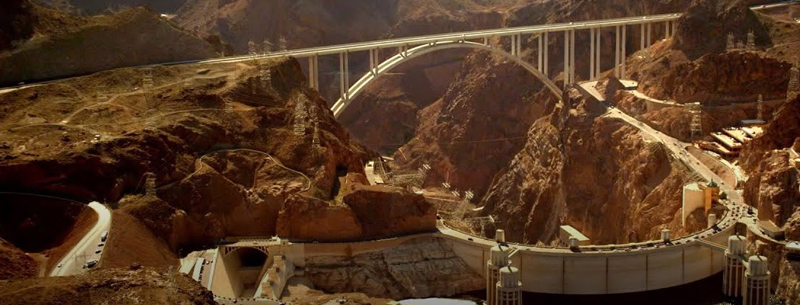British author Deborah Cadbury wrote Seven Wonders of the Industrial World, a book telling the stories of seven great feats of engineering of the nineteenth and early twentieth centuries. In 2003 the BBC made a seven-part documentary series on the book, with each episode dramatizing the construction one of the wonders. The seven industrial wonders are:
SS Great Eastern
The SS Great Eastern was an iron sailing steamship designed by Isambard Kingdom Brunel. She was the largest ship ever built at the time of her 1858 launch and had the capacity to carry 4,000 passengers around the world without refueling. Construction of the great ship began on May 1st, 1854. When completed the ship would be 692 feet long.
Bell Rock Lighthouse
Bell Rock Lighthouse is the world’s oldest surviving sea-washed lighthouse and was built on Bell Rock (also known as Inchcape) in the North Sea, 12 miles (18 km) off the coast of Angus, Scotland, east of the Firth of Tay. In the early 1800s, a sunken reef 11 miles off the east coast of Scotland was claiming countless lives. civil engineer and lighthouse builder Robery Steveson had the vision to change this. Construction began on the lighthouse on Aust 18th 1807. When finished it would be over 200 feet tall. The lighthouse still stands today, over 200 years later.
Brooklyn Bridge
One of New York’s most famous landmarks, the Brooklyn Bridge transports 120,000 vehicles and 4,000 pedestrians every day. The Brooklyn Bridge, one of the oldest suspension bridges in the United States, stretches 5,989 feet (1825 m)[1] over the East River, connecting the New York City boroughs of Manhattan and Brooklyn (on Long Island). Construction of the bridge began on January 3rd, 1870. Constructed largely underwater, this suspension bridge embodies engineering ingenuity in the era. The bridge was completed 13 years later and officially opened on May 24th, 1883.
London sewage system
The London sewerage system is part of the water infrastructure serving London. The modern roots of the system were first developed during the late 19th century, but as London has grown the system has been expanded and needs further investment. From 1859 to 1868, scores of men and women worked to complete the sewer. It was planned to create 83 miles of the sewer so that he waste could be diverted away from London. In 1869, the system was complete and the pumps were turned on for the first time. The sewers and pumping system as still in use today, but account for only 1% of the sewer network.
First Transcontinental Railroad
The First Transcontinental Railroad is the popular name of the U.S. railroad line (known at the time as the Pacific Railroad) completed in 1869 between Council Bluffs, Iowa/Omaha, Nebraska (via Ogden, Utah and Sacramento, California) and Alameda, California. The Civil war had ended and the US Government wanted a railroad that would like the East and West coats. Leland Stanford and Grenville M. Dodge were given the task. on Jan 8th, 1863 constructions on the railroad began in Sacramento when Stanford shoveled the first earth for the line. He would then face the Sierra Nevada Range,l meanwhile Dodge moved across the desert. The Transcontinental railroad truly made the United States of America.
https://www.youtube.com/watch?v=mS0K4RLDR7A
Panama Canal
The Panama Canal is a ship canal that joins the Caribbean Sea and the Pacific ocean. One of the largest and most difficult engineering projects ever undertaken, it had an enormous impact on shipping between the two oceans, replacing the long and treacherous route via the Drake Passage and Cape Horn at the southernmost tip of South America. in the 1870s, Ferdinand De Lesseps dreamt of linking the Pacific and Atlantic oceans by building a canal through Panama. In 1907 the Panama Canal was completed and a humble tug was the first vessel to make it through.
https://www.youtube.com/watch?v=CEabyqIpYw4
Hoover Dam
Hoover Dam, originally known as Boulder Dam, is a concrete arch-gravity dam in the Black Canyon of the Colorado River, on the border between the U.S. states of Arizona and Nevada. Frank Crowe envisioned a dam that would harness the power of the Colorado River. In the 1930s engineers designed the Hoover Dam near Las Vegas, taming the Colorado River and giving a reliable water supply for California, Nevada, and Arizona. Construction of the dam began in September 1932. Four diversion tunnels had to be built so that the concrete could be poured. The dam was completed in 1936 – more than 2 1/2 years ahead of schedule. Crowe picked up a bonus that amounted to the equivalent of 4 million dollars today.
https://www.youtube.com/watch?v=XE8yZZ5QEj4
Final Word
This video is dedicated to engineers who shaped the modern world. Their creations continue to inspire many people today and combine to create the true, Seven Wonders Of The Industrial World.
